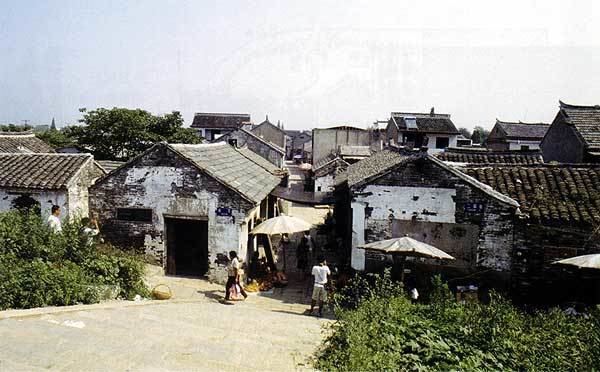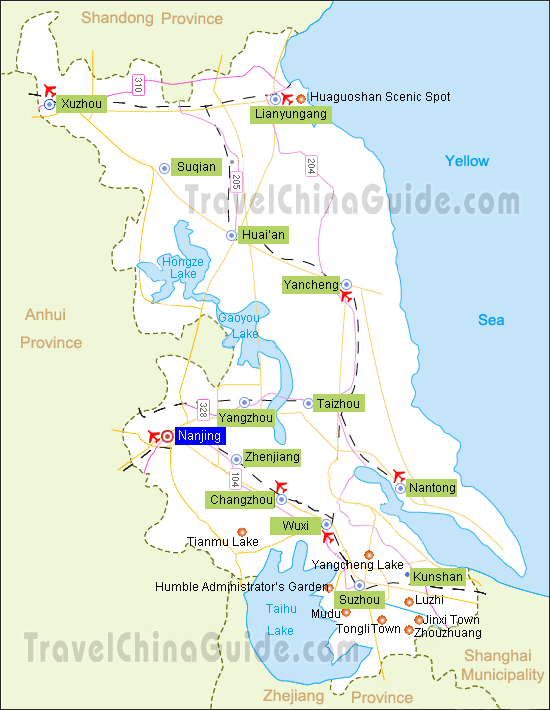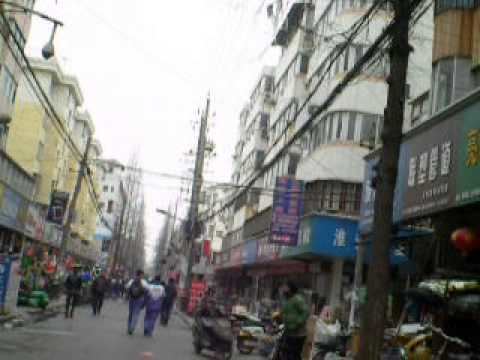Mayor Fan Jinlong (???; ???) | Province Jiangsu Area 517 | |
 | ||
Country Peoples Republic of China University Hangzhou Teachers College | ||
Map of Huaian
Huai'an (Chinese: 淮安; pinyin: Huái'ān), formerly called Huaiyin (simplified Chinese: 淮阴; traditional Chinese: 淮陰; pinyin: Huáiyīn) until 2001, is a prefecture-level city in central Jiangsu province of Eastern China. It borders Lianyungang, Suqian to the north, Yancheng to the northeast, Yangzhou to the southeast, and Chuzhou (Anhui) to the southwest.
Contents
- Map of Huaian
- Night beauties huaian city china
- Geography
- Administration
- Ancient China
- Pre History
- Xia Shang and Zhou Dynasty
- Qin and Han Dynasty
- Ming and Qing Dynasty
- Since the Peoples Republic of China
- District of Huaiyin
- Huaiyin Region
- Huaiyin City
- Huaian City
- Transportation
- Notable people
- References

As of the 2010 census the municipality had 4,799,889 inhabitants, of whom 2,494,013 lived in the four urban districts.

Night beauties huaian city china
Geography
Most part of Huai'an lies in Jianghuai Plain, which gives it a flat landscape. There are a few hills inside Xuyi. The highest altitude in Huai'an is 200m. Huai'an also has a large number of lakes and rivers. The most famous include The Beijing-Hangzhou Grand Canal and Huai River. Hongze Lake, the fourth largest freshwater lake in China is in the south of Huai'an. On the south, it also has several smaller lakes.
Administration
The prefecture-level city of Huai'an administers 8 county-level divisions, including 4 districts and 4 counties.
These are further divided into 127 township-level divisions, including 84 towns, 33 townships and 10 subdistricts.
Ancient China
The area of Huai'an spans an ancient canal of the Huai River, and the name of Huai'an expresses the residents' hope for a lastingly peaceful Huai River.
Pre-History
Chinese mythology recounts that Yu the Great, the Chinese leader with a legendary ability for flood control techniques, was constantly taming the Huai River here in the Huai'an area.
Traces of the activities of ancient Chinese living about 5000 to 6000 years ago have been found in the area. The most famous of these is the Qingliangang Hill Civilization (zh:青莲岗文化).
Xia, Shang and Zhou Dynasty
The borough area had been properly developed, and led China in convenience of transportation and irrigation. The Gangou Drain (the section of the Grand Canal of China between Huaiyin and Yangzhou) connected the Yangtze River and the Huai River delta region. The Qian Road and Shan Road that traversed the region reached Southern and Northern China. Thus, Huaiyin was a critical area for several strong states in the Spring and Autumn period. The region was occupied by the Wu, Yue and Chu states, one after another.
Qin and Han Dynasty
After the Qin Dynasty consolidated all states in China, the County System was promoted throughout China. Huaiyin County (Matou Town of Huaiyin District today), Xuyi County (Northern town of Xuyi County today), and Dongyang (Maba of Xuyi County today) were built in the region.
In a movement of rebelling farmers during the later years of the Qin Dynasty, the people of Huai'an supported the rebel forces, including the famous militia leader Han Xin, who was highly honored for his bravery and meritorious deeds.
In the epoch of the West Han Dynasty, Huaipu County (Western Lianshui County today), Sheyang County (Southeast of Huai'an District today) and Fulin County (under the water of Hongze Lake today) were built.
During the Qin and Han Dynasties, great improvements, especially in irrigation, were made to agriculture and manufacturing. In the later years of the East Han Dynasty, the Governor of Guanglin, Cheng Deng, built the Gaojiayang Levees (Hongze Lake Levees today). These 30 miles of levees kept out flood waters and protected farmlands. He also built the Pofu Pool for farm irrigation. Iron-made apparatus and bull-farming were widespread. Although a few wars and battles took place, agriculture, transportation and logistics made fair progress. The highway built by the first Qin Emperor went through the region, and the West Way of Gaogou Drain, built by Cheng Deng, improved traffic between the Yangtze and the Huai River area.
Handicrafts and business also developed during this period, while culture and the arts were at high levels, as well. Home-teaching and private schools flourished during the Han Dynasty, and many famous artists appeared: for example, the Han-text composers Mei Chen and Mei Gao, and Chen Lin, one of the Seven Scholars of Jian'an.
Ming and Qing Dynasty
The Ming Dynasty Ancestor Tomb (Ming Zu Ling) [明祖陵] is located in Xu Yi County (Xu Yi Xian) [盱眙县], the former Sizhou, of the Huai An Municipality (Huai An Shi) [淮安市]. This location was chosen for the tomb because the founder of the Ming Dynasty, Zhu Yuan Zhang (1328-1398), aka Hong Wu (1368-1398), was conceived in Xuyi town of Huai'an, and his grandfather died there, while his family was moving from Sizhou to Fengyang in Anhui. Three of the Hong Wu emperor's ancestors were buried here, his grandfather, his great grandfather, and his great great grandfather. Today the tomb site features a sacred way (shen dao) with one of the most impressive collections of Ming Dynasty stone statues in all of China.
Since the People's Republic of China
Whole area of Huaiyin was occupied by Chinese communist army in December 1948 and became part of the territory of the People's Republic of China.
District of Huaiyin
District of Huaiyin was established on April 21, 1949, operating 10 counties, which were: Huaiyin, Huaibao (built of west parts of Huai'an and Baoyin section of the Grand Canal of China and county office located at town of Chahe), Siyang, Shuyang, Guanyun, Suqian, Suining, Xin'an (built of parts of Shuyang and Suqian and county office located at town of Xin'an), Pisui (built of southern Longhai Road of Pixian and northern Suining and county office located at town of Tushan) and Lianshui. The district office was at Huaiyin County.
Huaibao County was dissolved on May 12, 1950 to Huaiyin, Huai'an and Baoyin County (belonging to District of Yangzhou). And District of Huaiyin had 9 counties then.
The city area of Huaiyin County was separated as Qingjiang City on December 18, 1950 and District of Huaiyin then had 1 city and 9 counties.
With the establishment of Jiangsu Province in January 1953, District of Huaiyin was transferred to the province. Xin'an County was renamed to Xinyi County and county office of Pisui was moved to town of Yunhe. District of Huaiyin then had Qingjiang City and 9 counties, Huanyin, Lianshui, Guanyun, Siyang, Shuyang, Xinyi, Suqian, Pisui and Suining. The district office was sited at Qingjiang City. Later in the year, Suining, Pisui and Xinyi was given to District of Xuzhou and then District of Huaiyin had one city and six counties.
Qingjiang City was promoted to prefectural level of Jiangsu Province though was still operated by District of Huaiyin. Soon the district was joined by Huai'an County from District of Yancheng and in December by Sihong County from District of Suxian and Xuyi County from District of Chuxian in Anhui Province. The amount of all counties belonging to District of Huaiyin was 9.
In 1956 Hongze County was created from parts of Sihong, Huaiyin and Xuyi County with the county office sited at town of Gaoliangjian. The amount of counties then was 10.
In 1957 Xin'an Administrative Office was built from joint parts of Guanyun and Lianshui County and soon later renamed to Guannan County. The counties number reached 11.
Huaiyin County was merged in 1958 to Qingjiang City which was renamed to Huaiyin City and operated by District of Huaiyin, which had one city and 10 counties then.
However, in 1964, Huaiyin City was renamed back to Qingjiang City and Huaiyin County was restored but the county office was sited in Qingjiang City.
Xuyi County was transferred to District of Luhe in 1966 and District of Huaiyin then had one city and 10 counties.
Huaiyin Region
District of Huaiyin was renamed to Huaiyin Region in 1970 with the region office sited at Qingjiang City, operating Qingjiang City and 10 counties, which were Guanyun, Guannan, Shuyang, Suqian, Siyang, Lianshui, Huaiyin, Huai'an, Hongze and Sihong.
Xuyi County was returned by Luhe Region in 1971 as well as new transferred Jinhu County. Then one city and 12 counties belonged to Huaiyin Region.
In 1975 the office of Huaiyin County was relocated at the town of Wangyin.
Huaiyin City
Qingjiang City was renamed to Huaiyin City again in 1983 and operated directly by Jiangsu Province with the end of Huaiyin Region. Meanwhile, 11 counties, which were Guannan, Shuyang, Suqian, Siyang, Lianshui, Huaiyin, Sihong, Huai'an, Hongze, Xuyi and Jinhu, was transferred to new Huaiyin City while Guanyun County to Lianyungang City. The municipal area of Huaiyin City was split into two districts, Qinghe and Qingpu. Then 11 counties and 2 districts were belonging to Huaiyin City.
Suqian and Huai'an County was promoted to county-level cities in December 1987 by the order approved by Department of State, then renamed to Suqian and Huai'an City respectively. At the moment, Huaiyin City was operating 2 cities, 9 counties and 2 districts.
Suqian City was promoted to prefectural level of Jiangsu Province in 1996 and Shuyang, Siyang and Sihong County was transferred to Suqian City while Guannan County to Lianyungang City. After the adjustment, Huaiyin City had 5 counties, which were Huaiyin, Lianshui, Jinhu, Hongze and Xuyi, and 2 districts, Qinghe and Qingpu and was operating Huai'an City.
Huai'an City
By the order approved by Department of State on December 21, 2000, Huaiyin City was renamed to Huai'an City with the city office sited at Qinghe District while Huai'an District was established from original Huai'an City with the district office at town of Huaichen and Huaiyin District was established from original Huaiyin County with the district office at town of Wangyin. The county borders were also be slightly modified.
Now Huai'an City are operating over 4 districts, Qinghe, Qingpu, Huai'an and Huaiyin, and 4 counties, Xuyi, Lianshui, Jinhu and Hongze.
Transportation
Huai'an is served by the Xinyi-Changxing Railway, which has a station in Huaiyin District.
The city is also served by nearby Huai'an Lianshui Airport. Currently the airport is only used by China Eastern airlines offering flights to Beijing-Capital, Chongqing, Guangzhou, Shanghai-Hongqiao, Shanghai-Pudong, Wenzhou, Wuhan, Xiamen, and Xi'an. The airport is located 22 km from Central Huai'an in Lianshui county.
